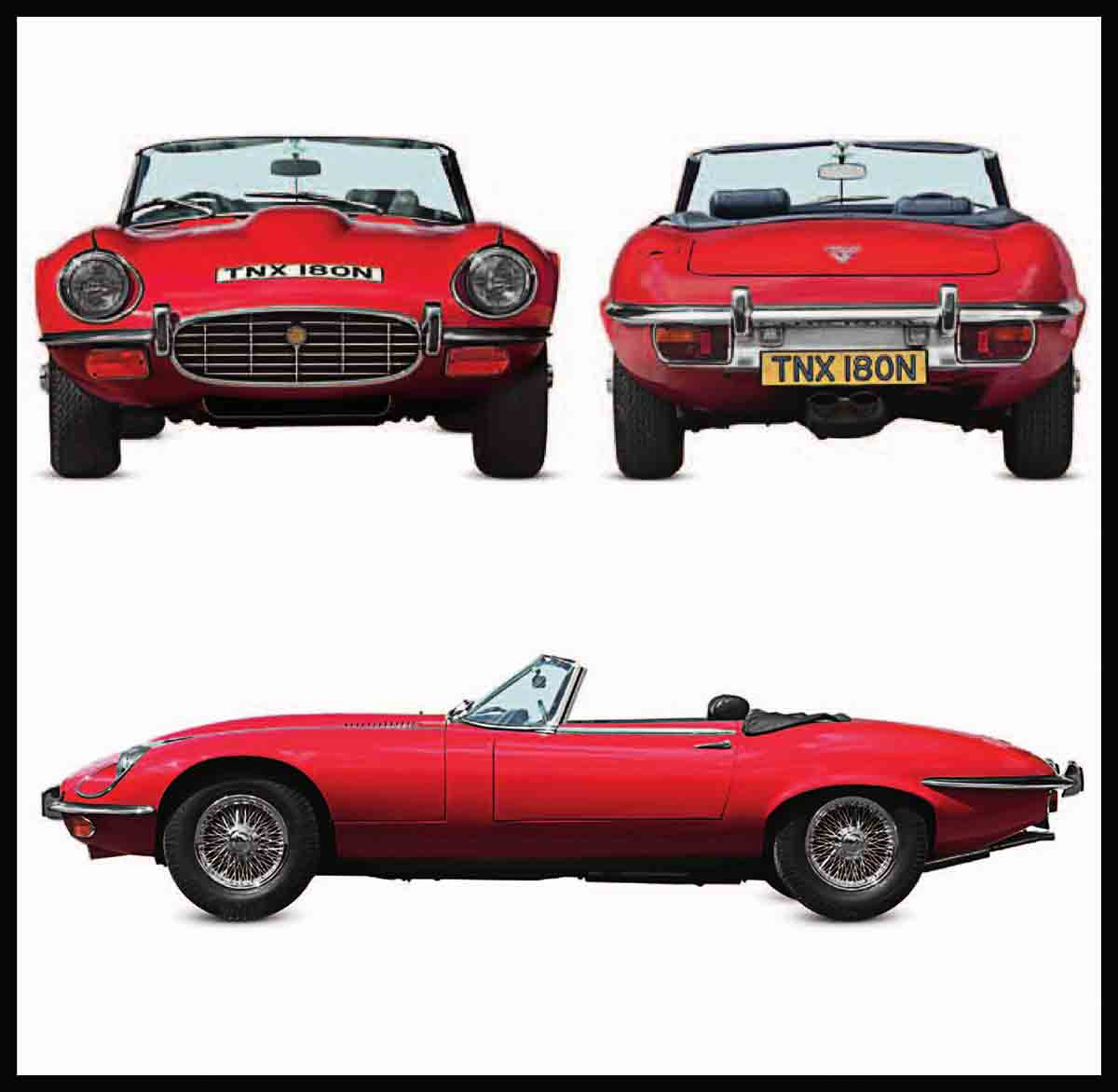
Jaguar E-type
Lusted after by generations of car enthusiasts, the E-type, known as the XKE in the United States, caused a sensation on its 1961 introduction. Sexily styled and technically advanced, the Jaguar promised 150 mph (241 km/h) performance for a fraction of the cost of exotic Italian rivals, and made cars such as the Aston Martin DB4 seem overpriced and under-endowed. As a symbol of the Swinging Sixties, nothing comes close. Later, the E-type suffered a middle-aged sagging, and the final runs of V12s proved difficult to shift in the key U.S. market.

WITH ITS racing-inspired looks, the E-type could be excused anything. But no excuses were necessary: Under the skin it was more sophisticated than any rival. The monocoque body tub, joined to a bolt-on, square-tube front structure, evoked that of the D-type racer. The suspension used torsion bars at the front, but at the rear there was a new, all-independent setup using coil springs and four dampers. The result was excellent roadholding allied to a genuinely subtle ride, at a time when most sports cars had board-firm suspension. The E-type’s engine, inherited from the preceeding XK150 model, was a 3,781 cc version of Jaguar’s famed XK twin-cam straight-six. In 1964 this gave way to a 4,235 cc unit, and the slow-changing gearbox—made by a long-time Jaguar supplier—was replaced by a unit of Jaguar’s own design. Two years later a longer-wheelbase 2+2—with a higher roofline and a taller, more upright windshield—joined the roadster and two-seater coupé. This longer chassis formed the basis of the V12-powered Series III, introduced in 1971 to replace the 1968-on Series II.


SPECIFICATIONS
| Model | Jaguar E-type, Series III, 1971-74 |
| Assembly | Coventry, England |
| Production | 72,507 |
| Construction | Steel monocoque |
| Engine | 5,343cc, ohc V12 (Series III) |
| Power output | 272 bhp at 5,850 rpm (Series III) |
| Transmission | Four-speed manual; optional auto |
| Suspension | Independent; torsion-bar front |
| Brakes | Four-wheel discs |
| Maximum speed | 150 mph (241 km/h) |

Compromising on form
The Series III iteration of the E-type was a softer, less overtly aggressive makeover of the 10-year-old original. New features included subtly flared wheelarches and a “bird cage” grille. The hump in the hood top accommodated the V12 engine. As before, there was no place for a license plate—it was usually sported in the form of a large sticker. There was still no other car like it on the road, including in the United States, where this example featured in a scene from the British-financed 1978 movie Convoy!

From Swallow to Jaguar
Jaguar began life as a maker of motorcycle side-cars under the Swallow name. Cars under its own banner arrived in 1931 with the SSI, and in 1935 the SS Jaguar was launched. After World War II the “SS” prefix was dropped for its negative connotations.
THE EXTERIOR
Even in lengthened and over-embellished Series III form, the E-type remains voluptuously impressive. Created by Jaguar stylist and aerodynamicist Malcolm Sayer, the basic long-nosed lines are a development of the shape of the D-type racers that were so successful at the Le Mans 24-hour race in France. At this time, all Jaguar styling was evolved with the participation of marque founder Sir William Lyons, who had a keen eye for design.

Jaguar emblem is only found on grille logo

All Sills are V12—although a straight-six was considered

Exposed headlights more efficient, but less attractive

“Bird cage” grille

Typically sparing, yet stylish door handle

Knock-on hubs on optional wire wheels no longer have ears

Hood louvers help evacuate engine heat

Fuel filler always under flap on E-type

Bigger taillights—shared with some Lotuses—come in with 1968 SII

V12’s flamboyant four-exit exhaust gives way to twin-pipe design in 1973
THE INTERIOR
The E-type was never spartan, but from the introduction of the 4.2-liter model in 1964, the interior became a little more plush. Most notably it gained more comfortable seats, square-backed in place of the previous buckets, with headrests as standard on the Series III. It is only 3.8-liter cars that have a patterned-alloy dashboard center section, accompanied by an alloy-topped center console on early versions.

Interior of Sill largely as SII, but leather-rimmed steering wheel is new

Classic white-on-black instruments are typical Jaguar

E-type always has dials with non-reflecting black rims

Sturdy release for hood

Rocker switches replace toggles from “Series 1½” onward

Four-speed manual is standard; automatic optional on 2+2 and all V12s

Armrests come in with late 3.8s

Broad-pleat leather seats arrive with the 4.2 in 1964
UNDER THE HOOD
The Series III derives its character from the effortless performance of its V12 engine. This gives a maximum speed closer to 150mph (241 km/h) than was ever possible with a standard six-cylinder car. The 272 bhp quoted is a more realistic DIN figure than the 265 bhp that Jaguar had proclaimed for the 3.8 and 4.2 straight-sixes. It is achieved while using just a single camshaft for each bank of cylinders.

The all-alloy VI2 is of 5,343cc and delivers 272 bhp (DIN) at 5,850 rpm, with maximum torque of 304lb-ft at 3,600 rpm; it breathes through four Stromberg carburetors
It is a quote. The Definitive Visual History Of The Automobile 2011




